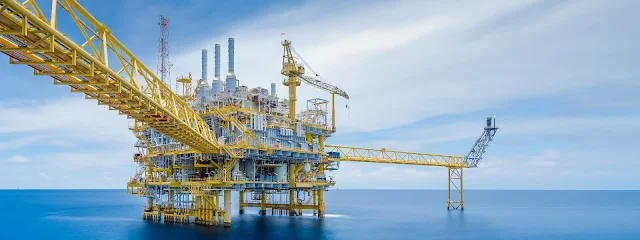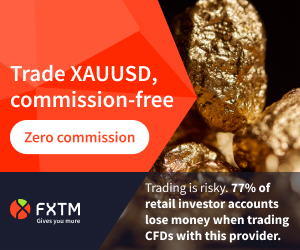Physical goods like metals, agricultural produce, and crude oil, which have utility value and can be bought and sold freely, form a unique asset class known as commodities. These are the oldest assets to be traded, with agricultural produce being the first. Trading in commodities is very popular and its popularity is expected to continue rising. The global commodity trading services market is expected to grow at a CAGR (compound annual growth rate¬) of 5.7% in 2021-2026, crossing the $5 trillion mark in 2026.
Categories of Commodities
Commodities are categorized based on their source and usage. The three most traded commodity categories are:
Energy
Crude oil, natural gas, and gasoline are the most traded commodities under this category. These commodities are sourced by mining and the products enter the market after extensive processing.
Did you know?
Since there are hundreds of different grades of crude oil, traders use the benchmarks Brent and WTI (West Texas Intermediate) to gain exposure to oil.
Metals
Heavily used in manufacturing and industrial purposes, metals are the second highest traded category of commodities. These include precious metals like gold, silver, palladium, aluminium, and copper as well as other metals like steel, bronze and other alloys.
Did you know?
Gold is considered a safe-haven asset, as it tends to retain, or even gain, its value during periods of geopolitical uncertainty and economic downturn.
Agriculture
Agricultural produce like wheat, corn, rice, coffee, sugar, and soybean are traded as commodities. As these are not extracted or mined from the reserves, these are also known as soft commodities. Due to their limited shelf life and high dependency on weather conditions, these commodities tend to be highly volatile.
Did you know?
Liquidity is a very important consideration for the commodity market. So, most new traders begin with oil or gold, which have the highest liquidity.
Advantages of Commodity Trading
As commodities are the only asset class with physical assets being traded in the market, the benefits of trading in commodities are also unique.
Hedge Against Inflation
While other assets, like stocks and currencies, are adversely impacted by inflation, commodity prices tend to rise during periods of inflation. Since commodities have a direct correlation with rising prices, traders often use these to hedge against the impact of inflation on other assets in their portfolios.
Hedge Against Risky Events
Natural disasters, economic crises, and geopolitical tensions tend to cause supply-chain disruptions. This restricts the supply of commodities and has a positive impact on their prices. Remember that highly localised events usually have no impact on commodity prices. Only the global ones do.
High Leverage
In the global financial markets, commodities are traded via derivatives. While there are futures and options, traders often gain exposure to commodities via CFDs (Contracts for Difference). CFDs allow traders to speculate on price movements without buying or owning the underlying commodity. Commodity CFDs tend to come with higher leverage than other asset classes. Remember to use leverage judiciously. While high leverage increases your profit potential, it also increases your losses in case the market moves against you.
Tip
Commodities, especially oil and gold, are considered a good way to diversify a portfolio that includes stocks or stock indices.
Major Factors Affecting Commodity Market
The commodity market works differently than most asset classes. Here are the major factors affecting commodity prices:
Supply & Demand
Like any other asset, commodity prices are impacted by the market forces of demand and supply. An increase in supply exerts pressure on prices, while demand has a direct correlation with commodity prices.
Tip
For oil, the OPEC (Organization of the Petroleum Exporting Countries) adjusts production to maintain a balance between supply and demand to prevent heavy fluctuations in prices.
Seasonality
Commodity prices tend to rise during certain parts of the year. For example, the consumption of coffee increases in winter, boosting demand in the global market and, therefore, the price. Gold trading tends to follow an upward trajectory during the “wedding season” in India, the second highest gold consumer in the world.
US Dollar Strength
In the global financial markets, commodities are quoted in the US dollar. With any strengthening of the US dollar, commodities become more expensive for people buying in other currencies. This affects demand for commodities, resulting in a decline in prices.
Transportation Constraints
Commodities produced anywhere are consumed globally, thanks to the advancements in transportation and storage. This is the reason that commodities prices are most vulnerable to supply chain bottlenecks.
Nature
Although localised events do not have a significant impact on global commodity prices, adverse weather conditions can cause market fluctuations. For example, coffee prices in the global markets rose 4% in a single day in August 2022, when production in Brazil, the world’s largest coffee producer, was halted by bad weather. Natural disasters like hurricanes in the US tend to cause fluctuations in oil prices.
Other Factors
Geopolitical events affect the supply and demand of commodities, causing market fluctuations. For instance, the Russia-Ukraine war resulted in a decline in crude supply, lending support to oil prices.
The release of economic data, especially GDP growth, inflation and PMI (purchase managers index), has an impact on commodity prices. It’s a good idea to keep an eye on the economic calendar when trading in commodities.
Any new developments or major announcements in the use of renewable sources of energy impacts oil prices.
Tip
When trading commodities, remember that commodities typically follow larger cycles and sub-cycles. Traders typically try to catch this larger trend and trade the volatility within this.
Key Takeaways
Commodities represent several asset classes, including metals (like gold and silver) and energy (like oil and natural gas).
1. Trading in commodities is a popular hedge against inflation.
2. Commodity prices are not region-specific and are mostly impacted by global events.
3. Any appreciation in the US dollar has a dampening effect on commodity prices.
Open a live account with ADSS and trade commodities with 0% commission.













